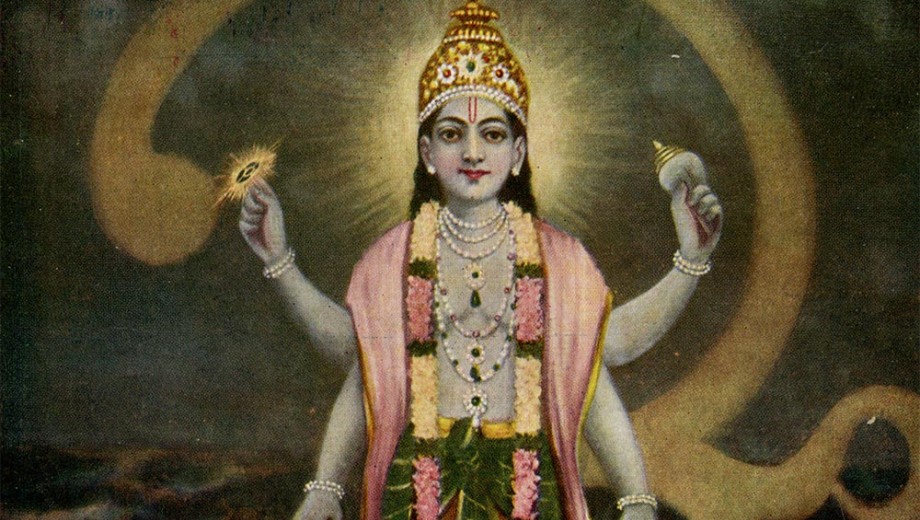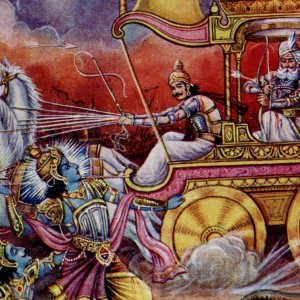Nell Hawley, a graduate student in South Asian Languages and Civilizations who has served as a TA for first- and second-year Sanskrit, notes the challenges in “trying to make a language that is so separate from us in time and space be accessible to your average UChicago undergrad.”
For the 15 to 20 students—undergrads along with graduate students in Divinity and SALC—who take Sanskrit each year, the first challenge is simply mastering the complex grammar. English is written using the Roman alphabet, also known as the Latin alphabet; Sanskrit texts are written in different alphabets depending on the time period or place.
UChicago students learn to read and write in a script called Devanagari, but Sanskrit can also be written using the Malayalam and other alphabet systems. Where English and Arabic nouns have three cases and Latin has five, Sanskrit has eight. English writers and speakers try to avoid passive voice, which is not only common in Sanskrit, but expressed using different verbs than active voice. “There are just so many different ways of expressing action in Sanskrit,” Hawley says.
Gary Tubb, the Anupama and Guru Ramakrishnan Professor in Sanskrit Studies and faculty director of UChicago’s Center in Delhi, notes the large number of synonyms for almost every word. “We could pick a word for the moon and teach students how to talk about the moon,” he says, “but if they go to India the chances are 1 in 15 someone’s going to use the same word.”
As a result, first-year students focus on reading and writing rather than speaking. They can often write, “Rama’s father fell to the ground like a tree that had been struck by lightning” without knowing how to say “hello” or “it’s raining.”
Wendy Doniger, the Mircea Eliade Distinguished Service Professor of the History of Religions, teaches the Mahabharata as part of second-year Sanskrit, where its relatively simple language is suited to students who have just gained a basic understanding of Sanskrit grammar. She likens the teaching process to “watching a child learn to walk or ride a bicycle.”
“In what other language can you take one year and then in the second year read the canonical text?” says Hawley, who notes that second-year students get some introduction to spoken Sanskrit as well.
But no sooner have Sanskrit students mastered the mechanics when the subject matter itself becomes difficult.
“If you were teaching third-year French and were reading a poem,” Tubb says, “you wouldn’t expect the teacher to talk about how Boolean algebra was done in French.” But because Sanskrit, like ancient Greek and Latin, was the scholarly language of its time, it’s immersed in epistemology and mathematics as well as literature. Beginning in the third year, which is considered advanced and includes third- and fourth-year undergraduates along with graduate students, Sanskrit classes study a series of different types of texts: from philosophical treatises to plays to studies of physics or music. The wide-ranging subject matter is challenging both to teach and to read, Tubb says, “which also makes it a lot of fun.”
In the past, after learning the language at their universities, Sanskritists like Tubb traveled to India to study with shastris, scholars who live an almost monastic existence and teach only Sanskrit, in all its forms and scripts. Although the practice is less common now, Tubb eventually hopes to bring shastris or people with equivalent training to UChicago for a quarter at a time to teach students here.
Though there are some efforts to revive spoken Sanskrit, shastris are among the few people who speak it regularly. Still, Whitney Cox, PhD’06, an associate professor in SALC, notes that modern-day conversations in Hindi, Bengali, and even languages like Tamil, which pride themselves on being linguistically distinct from Sanskrit, contain multiple Sanskrit words. “They pick out parts of reality still really well,” says Cox, who instead of a dead language prefers to think of Sanskrit as “permanently contemporary.”
Read reviews of other translations and adaptations of the Mahabharata by Doniger [PDF] and Cox [LINK].


